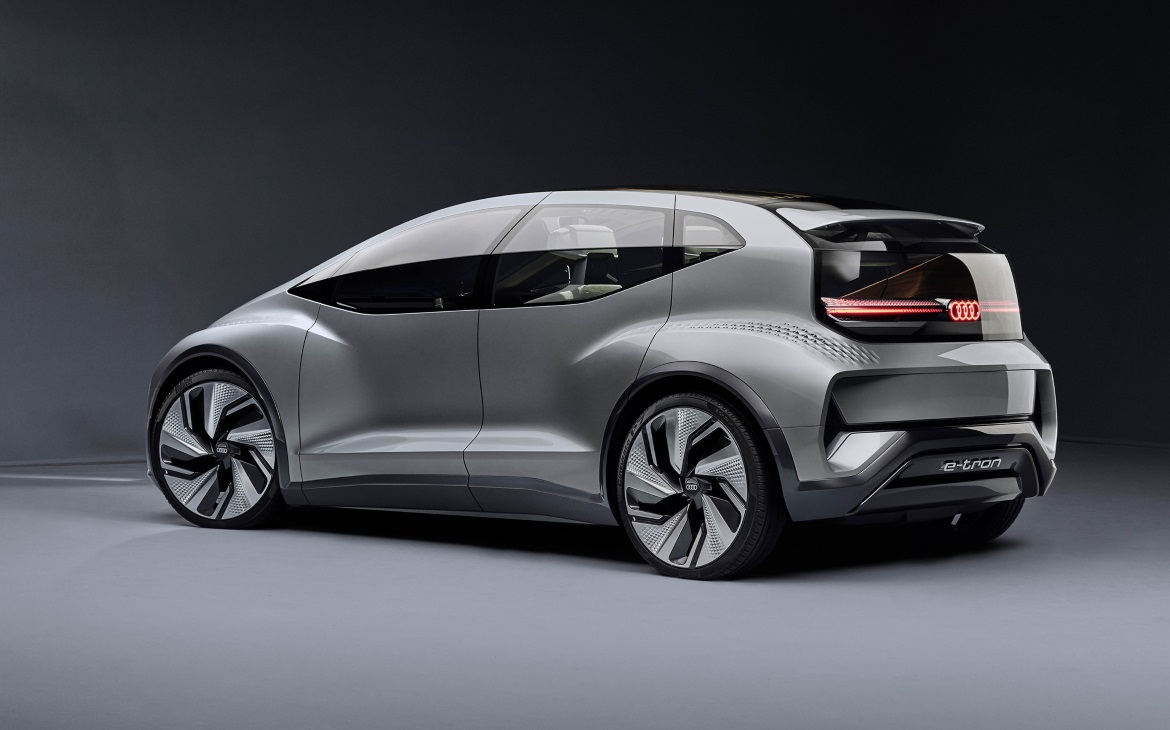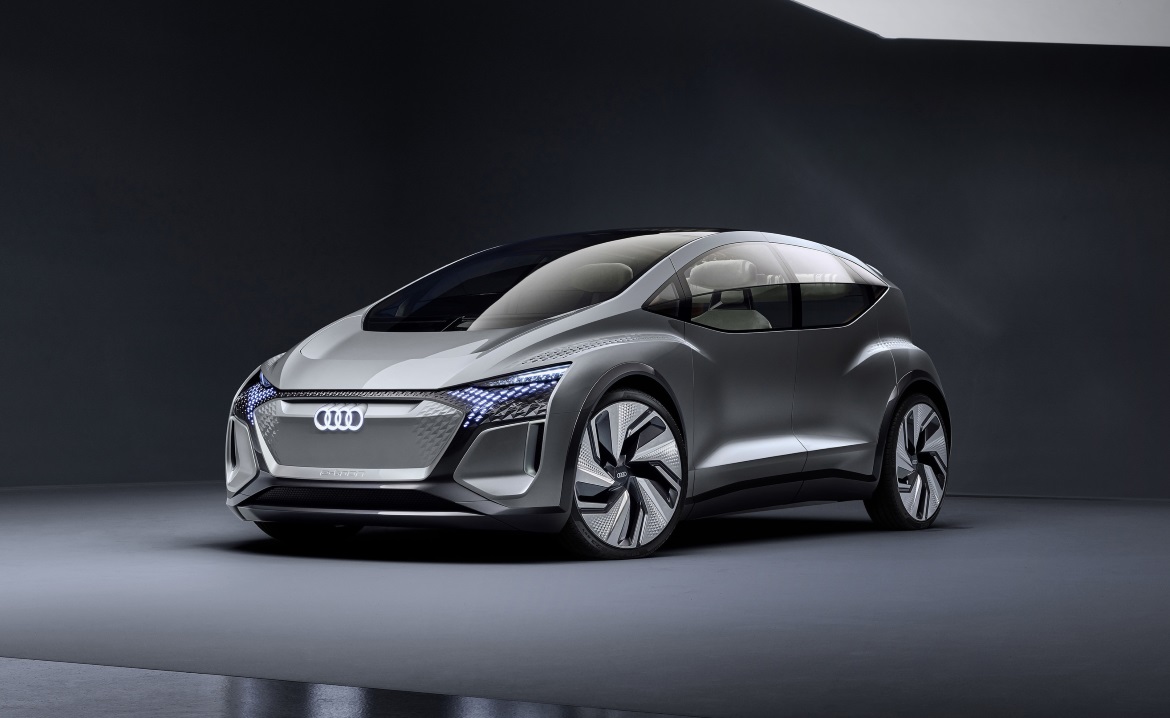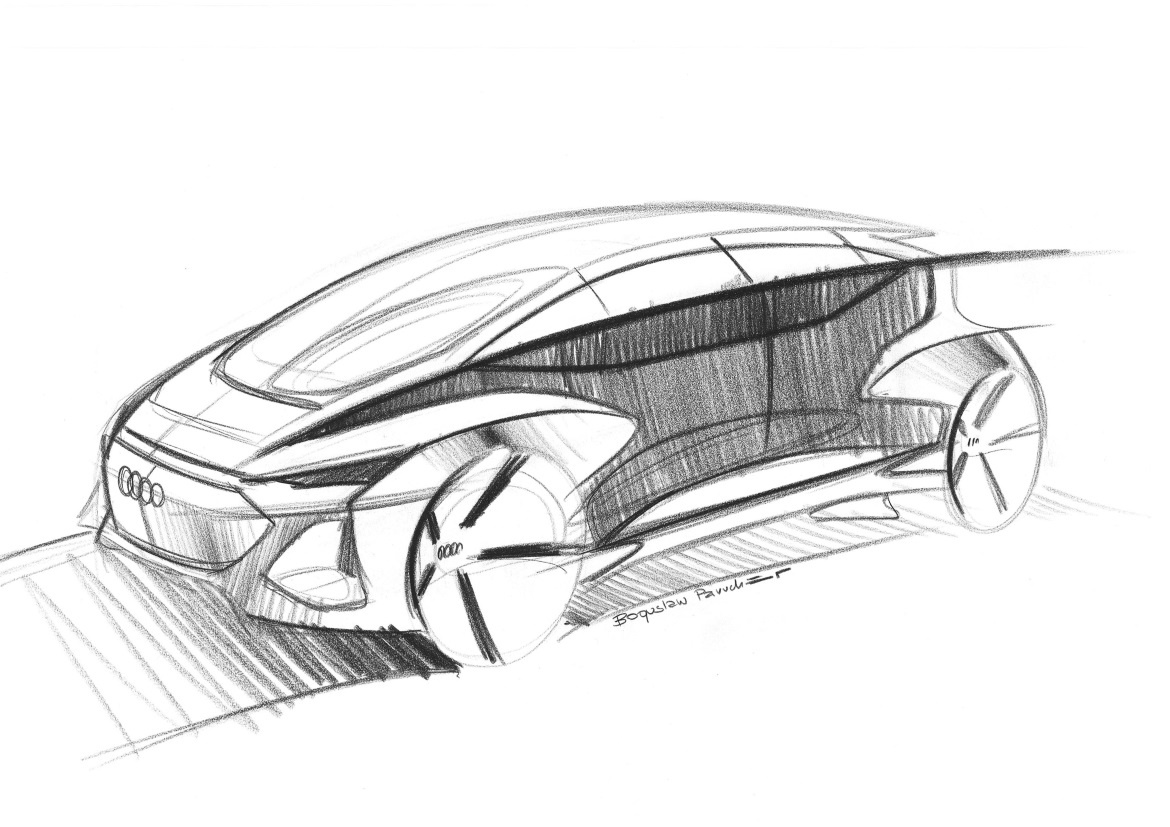At Auto Shanghai 2019, Audi is introducing a visionary mobility concept for the megacities of the future. The showcar, called Audi AI:ME, offers compact dimensions, a spacious, futuristic interior, and the ability to drive autonomously at level 4. This allows the occupants to do what they like with their time on board. The concept offers a broad range of high-tech features for communication, entertainment, or simply relaxation.
The body line of the Audi AI:ME demonstrates how emotion and spatial economy can form a perfect synthesis in an electrically driven compact car. There is a reason that the name AI:ME emphasizes the relation to the Audi AIcon, the study of automated long-distance operation introduced in 2017. The affinity of the body line and the concept of these two cars is evident. With an exterior length of 4.30 meters and a width of 1,90 meters, the Audi AI:ME takes up as much traffic space as a present-day compact car. However, the wheelbase of 2.77 meters and the height of 1.52 meters indicate interior dimensions that are more likely to be found in the next higher class at least. This is made possible by the architecture of the electric drive. It allows for short overhangs and a large-volume interior without a propeller shaft tunnel.
For the occupants, the compact drive package offers a maximum amount of objectively available space, spatial comfort, and a great deal of variability. The Audi AI:ME is designed as a 2 plus-x-seater. Its layout relies on a variety of configurations for seat positions and stowage space. While only the individual seats at the front will be used during most journeys, the car offers space for up to four people in the front and on the rear bench if necessary. The car fundamentally changes how automobiles are used and significantly enhances the time spent on board. The car is increasingly becoming a “third living space” alongside our homes and workplaces. It is thus only consistent that the Audi designers did not subordinate the interior of the Audi AI:ME to the shape of the body. On the contrary. They prioritized the interior and made it the core of the whole vehicle. The focus here is less on the traditional connection between driver and vehicle—steering wheel, instruments, pedals—and more on the time spent in the automated vehicle. This is why these control elements are retracted with an elegant and sophisticated choreography and are then almost fully concealed by a stowage compartment with a surface made of open-pore walnut wood.
No matter what they are doing, the passengers can always find a comfortable seating position. The front seats are inspired by the classic lounge chair and feature a wide, comfortably cushioned seat, upholstered with textile material in warm shades of gray. The backrests are designed as curved shells that are attached to the seat cushion only with a vertical carrier. When the pedalry is not needed, drivers can rest their feet on the supports under the dashboard, such as on an ottoman. On the rear bench, which reaches around to the side sections of the car, occupants can vary their seating position almost any way they like.















